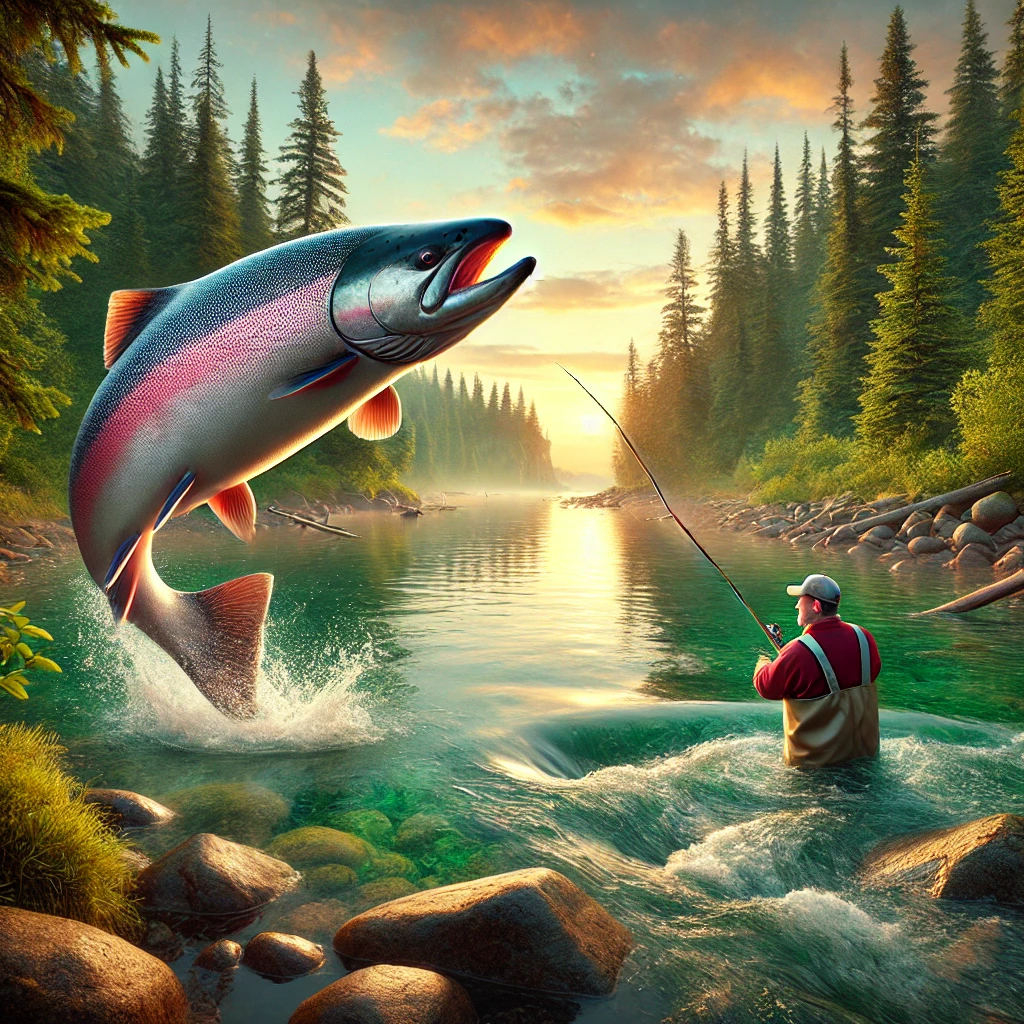Salmon in the Land of Ten Thousand Lakes: Minnesota’s Hidden Gem

Minnesota is often celebrated for its countless lakes and vibrant fishing culture, but many anglers are surprised to learn that the Land of Ten Thousand Lakes is also home to thriving salmon populations. While walleye and northern pike steal the spotlight, salmon fishing in Minnesota offers an unforgettable experience for those willing to explore the state’s rivers and lakes. In this guide, we will dive into the history of salmon in Minnesota, prime fishing locations, essential gear, and technique...
The History of Salmon in Minnesota
Salmon are not native to Minnesota’s waters, but their introduction dates back to the 1960s. The Minnesota Department of Natural Resources (DNR) stocked Lake Superior with several species of salmon to create new fishing opportunities. Today, species like Chinook (king) salmon, coho salmon, and pink salmon thrive in the cold waters of Lake Superior and its tributaries, providing a challenging yet rewarding experience for anglers.
Top Spots for Salmon Fishing in Minnesota
If you are eager to try your hand at salmon fishing in Minnesota, these locations should be at the top of your list:
- Lake Superior: The largest of the Great Lakes, Lake Superior is the epicenter of salmon fishing in Minnesota. Anglers flock to its shores for a chance to catch trophy-sized salmon.
- St. Louis River: Flowing into Lake Superior, this river offers excellent fishing during the salmon run in the fall.
- Knife River: Known for its spring and fall salmon runs, the Knife River is a favorite among local anglers.
- Temperance River: This picturesque river provides ample opportunities for shore fishing and wading during the salmon season.
Essential Gear for Salmon Fishing
Salmon are powerful fighters, so having the right gear is essential for a successful trip:
- Rods and Reels: A medium-heavy rod with a strong backbone is ideal for handling large salmon. Pair it with a high-quality spinning or baitcasting reel with a smooth drag system.
- Line and Leaders: Use a 15-20 lb test line to withstand the fight. Fluorocarbon leaders are recommended for their invisibility underwater.
- Lures and Baits: Spoons, spinners, and crankbaits are popular choices. For bait, consider using spawn sacs, herring, or smelt.
- Waders: Invest in durable waders for river fishing, especially during the chilly months.
Techniques for Catching Salmon
Salmon fishing requires skill and patience. Here are some effective techniques:
- Trolling: This method is commonly used on Lake Superior, where anglers use downriggers to keep lures at the desired depth.
- Drift Fishing: Perfect for rivers, this technique involves drifting bait naturally with the current.
- Fly Fishing: Experienced anglers often use fly rods with streamers to mimic baitfish, especially in smaller tributaries.
- Jigging: Vertical jigging with heavy spoons can be highly effective, particularly in deeper waters.
Best Times for Salmon Fishing in Minnesota
Timing is crucial when it comes to salmon fishing. The best seasons include:
- Spring: As ice melts, salmon become active, making spring an excellent time for fishing in rivers.
- Summer: Lake fishing peaks in the summer, with salmon feeding actively in deeper waters.
- Fall: The fall salmon run is a highlight for Minnesota anglers, with fish moving upstream to spawn.
Tips for a Successful Salmon Fishing Trip
To make the most of your salmon fishing adventure, keep these tips in mind:
- Scout Locations: Research and visit fishing spots before your trip to identify the best areas.
- Check the Weather: Salmon are more active during overcast days, and stable weather conditions can improve your chances.
- Use Electronics: Fish finders and GPS units help locate schools of salmon in large bodies of water.
- Be Patient: Salmon fishing can be challenging, so persistence is key.
Salmon fishing in Minnesota is a hidden gem waiting to be discovered. From the vast waters of Lake Superior to the serene rivers that feed into it, the Land of Ten Thousand Lakes offers unparalleled opportunities for anglers. With the right gear, techniques, and timing, you can embark on an unforgettable fishing journey. So pack your rods, grab your tackle, and explore Minnesota’s rich fishing heritage. The thrill of catching a salmon in these beautiful waters is an experience you will cherish for years to come.
Please Share this Article with your Friends or Colleagues.
From the Author: Earnest Sherrill
If there's one message I hope to leave with my readers, it's this: Don't wait. Get outside, explore, and create your own memories in the wild while you still can. Whether it's a weekend camping trip, a day hike, or even just sitting quietly in a park, the outdoors offers something for everyone.For those who share my passion or simply want to support a voice dedicated to celebrating the wild, consider helping sustain this work. Your support allows me to continue writing, reflecting, and sharing the wonders of the natural world.
Together, we can keep the spirit of the outdoors alive, one story, one adventure, and one "coffee" at a time.
Recent Posts
Subscribe Here
Subscribing will enable you to get regular notifications about new postings, and blah blah blah...Submit your Site


